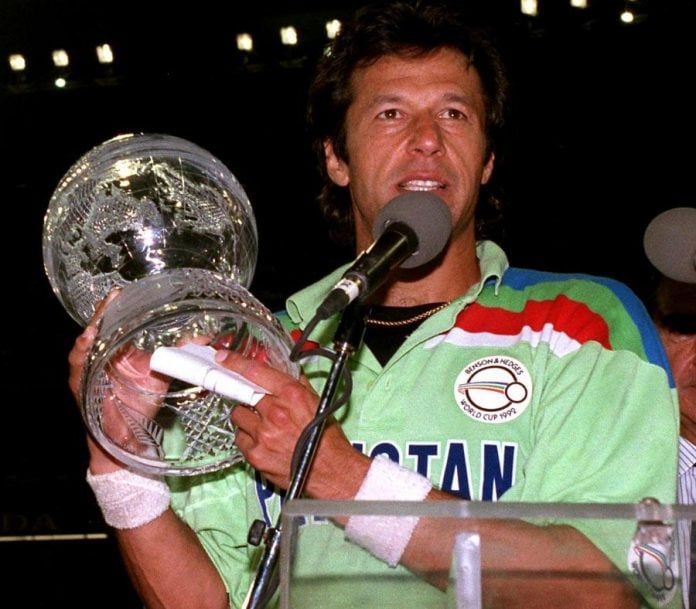As the curtains were raised for a pivotal revamp in World Cup history, Pakistan led by their charming personage Imran Khan rose to the occasion, claiming their first ever title in style.
The tournament moved into the Southern Hemisphere for the first time as Australia and New Zealand were given the opportunity to stage the event. It was a colourful, vibrant and moreover revolutionary one. Not only did it mark the return of South Africa to world cricket following the apartheid but significant transformations such as coloured clothing, floodlit games, white balls, refined fielding circles and the appalling ‘rain rule’ symbolized a momentous makeover in the sport. The fielding circles allowed two men outside the ring in the first 15 overs and afterwards a minimum of four inside the circle, giving birth to ‘pinch-hitters’. The format too was altered as the 9 teams played against each other in a round-robin structure. Nine teams, including minnows Zimbabwe took part as 39 games (10 under floodlights) across 18 venues were contested to reckon the ultimate winner.
A colourful World Cup
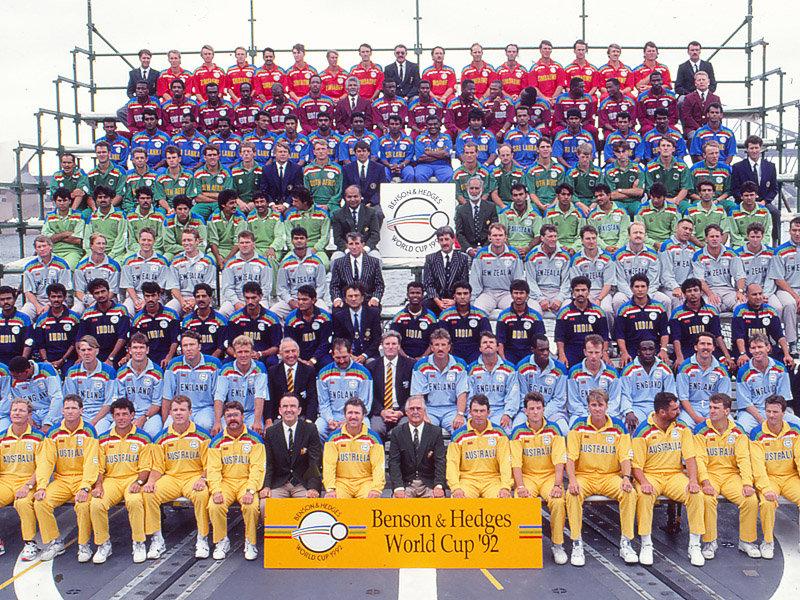
The opening game on 22nd February at Eden Park, Auckland was a battle between the co-hosts that resulted in an unexpected win for New Zealand against the defending champions Australia. Batting first, the Kiwis posted 248/6 which was spearheaded by Martin Crowe’s unbeaten century. The Australian run chase fell short by 37 runs despite David Boon’s ton, which steered their chase with little help from the other end.
Battle of the 300’s
On the following day, at New Plymouth, the two least-fancied teams, Sri Lanka and Zimbabwe engaged in a historical encounter. After winning the toss Sri Lanka chose to field. From the start, the minnows stepped up to the task, as opener and debutant Andy Flower mastered an unbeaten 115 and along with Andy Waller helped Zimbabwe pile up 312/4. His unbroken 145-run stand with Waller came in just 13 overs. But the dauntless reply came immediately and was energized by a solid opening partnership worth 128 between Athula Samarasekera and Roshan Mahanama. Samarasekera’s 75 came off 61 deliveries while Mahanama scored 59. Despite the middle order being stalled by Brandes and Jarvis, Arjuna Ranatunga charged his way to a fluent 88 in 61 balls, also ensuring the victory in the final over. It was the first time in ODI history that a team had won chasing a total of more than 300.
South Africa announces its return
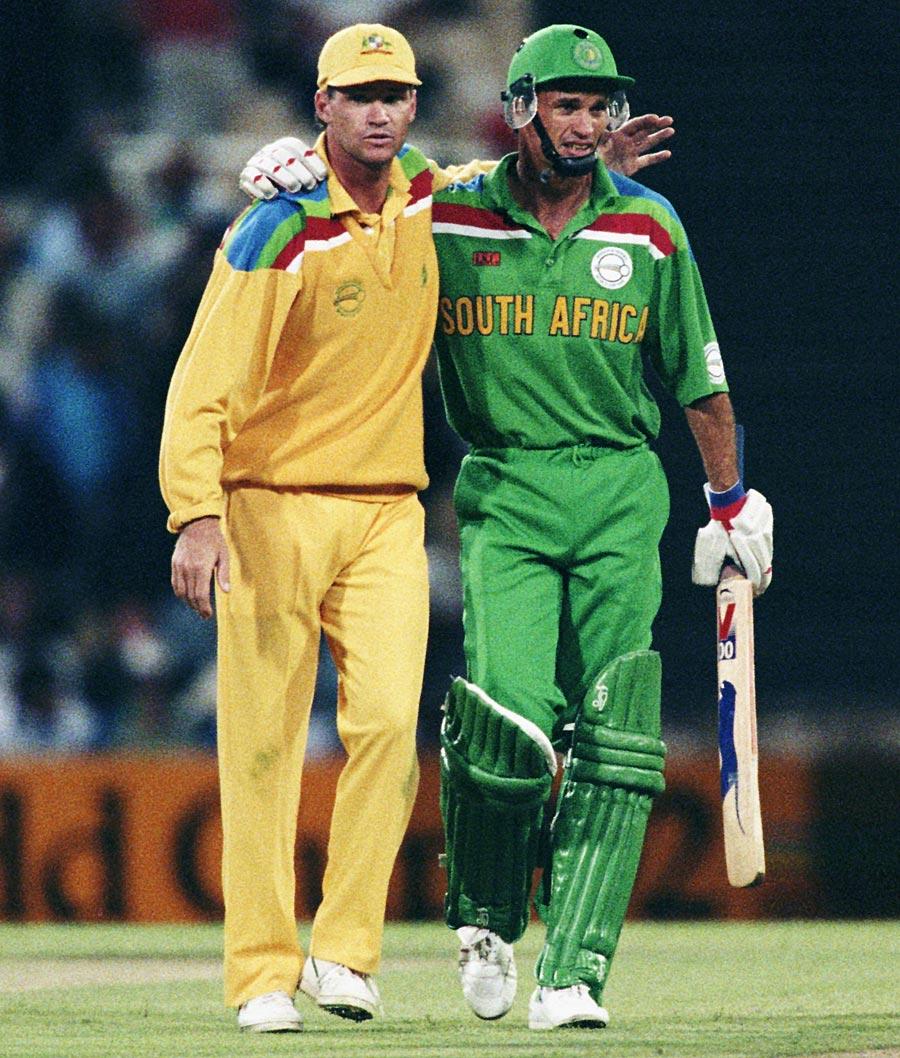
One of the highlights of the 1992 WC was South Africa’s return to Cricket after being banned for two decades. Kepler Wessels who returned to his native land after playing for Australia, led the team. On 26th February at SCG, they vanquished the defending champions in their very first game itself. Border’s choice of batting first seemed to prosper when openers Marsh and Boon added 42 but the visitor’s composure produced regular wickets as no Australian reached more than 30. The medium pace in cooperation with the fielding, particularly of Jonty Rhodes reduced Australia to a modest total of 170/9. Allan Donald took 3 for 34. The South Africans engaged in an untroubled run chase under floodlights. The 9-wicket win was secured with a splendid 81 runs by the skipper Wessels, who himself scored the winning runs against his former teammates.
Lankans halt the Protea charge
At Wellington, on March 2nd Sri Lanka met South Africa in their first meeting. South Africa made slow advancement allowing the Lankan bowlers to capitalize as they forced a collapse, capturing the last 9 wickets for 81 runs. Jayasuriya’s athleticism produced two blinders while Peter Kirsten top scored with 47 in an innings which was ceased at 195. Don Anurasiri took 3 for 41. The chase was however tattered by Donald at 35/3 but Ranatunga and Mahanama paired up to revive the innings. Mahanama’s artillery lifted the score by 68 while Ranatunga’s effective strokeplay produced an unbeaten 64 and despite losing four further wickets, Sri Lanka managed to clinch the victory in the last over.
West Indian supremacy raptures the World Stage (1975)
The battle between the ball and the willow …………
A ‘monkey jump’ and a timeless run-out
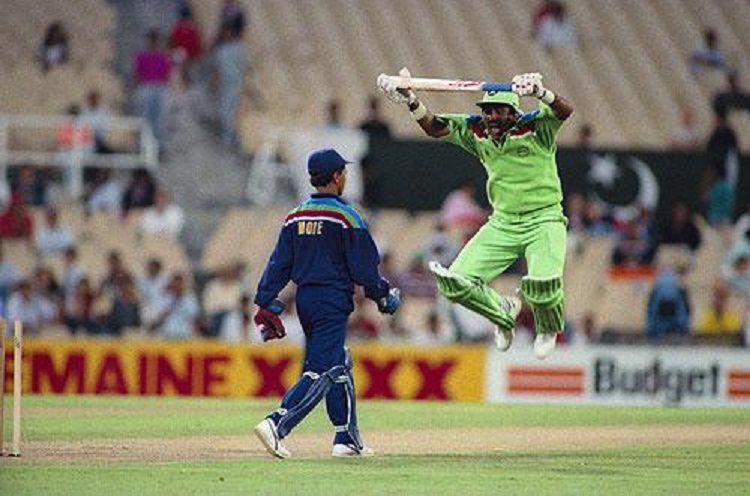
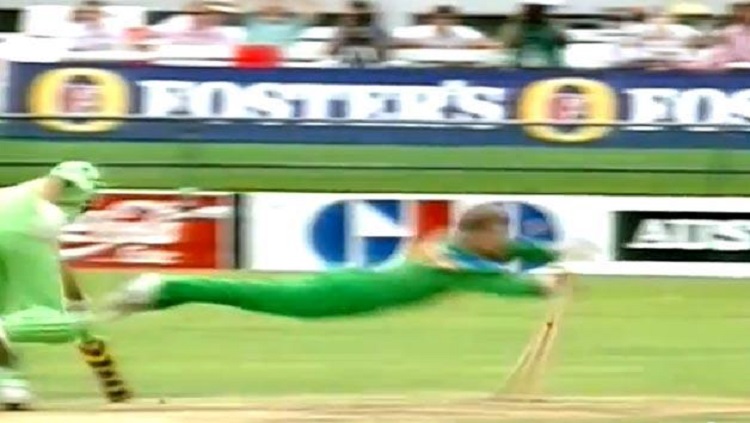
It was the first time the arch rivals India and Pakistan met in a World Cup game and responding to India’s 216/7, Miandad was in a tussle to pull his team out of a perilous situation. The struggle was muddled by stumper Kiran More’s sledging and vociferous appealing, infuriating Miandad to exchange a series of words. What happened next was pretty much unforeseen as Miandad moved away from his crease and did three monkey jumps, imitating More’s manner of appealing.
‘Caribbean Kings’ Retain the Crown (1979)
The battle between the ball and the willow was revived with the emergence of ODI cricket. Nestled by Test………….
At Brisbane, South Africa managed to compile 211 but the Pakistani chase was hit by the ‘rain rule’ revising the target to 194 from 36 overs. Inzi and Imran resumed play after rain. In the 31st over, Inzamam attempted to run for a leg-bye. At point, ‘Superman’ Jonty with the ball in his hands ran up to the crease, throwing himself at all three stumps beating Inzi’s desperate run by a margin. A play that would turn iconic.
The ‘Chicken Farmer’ clucks England
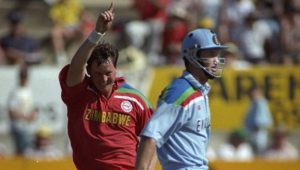
Zimbabwe, just as they had stunned Australia in their debut appearance in 1983, yet again came out with a surprise, this time beating England. The perennial underdogs were minnows again, as they faced England at the outback town of Albury. Three wickets each by Botham and Illingworth reduced them to a mediocre score of 134 which appeared no match for England’s strong outfit. But it was no highway. Among the amateurs, there was the chicken farmer Eddo Brandes who trapped Gooch in his first ball. He further removed Allan Lamb and rattled the stumps of Robin Smith and Graeme Hick, leaving England at 43/5. Stewart and Fairbrother’s resistance was hampered by Butchard who teamed up with Omarshah and Jarvis to clean the tail. Eventually the English innings toppled for 125, registering a narrow 9-run win for the minnows.
Pakistan’s timely ascent
New Zealand dominated the overall standings with 7 wins and were followed by England and South Africa who claimed 5 wins each. The 4th spot was initially contested by Australia and West Indies while Pakistan were scuffled with a solitary win, 3 losses and a point which was earned following a fortunate deadlock against England.
It meant that they needed to win all the remaining games to salvage any hope of a semi-final. They surfaced when it mattered, defeating Australia, Sri Lanka and in-form New Zealand in their vital last game to secure the final spot in the semis.
Inzi dazzles on the big stage, rain rule torments South African hopes

(The actual requirement was 21 off 1 delivery, as the digital scoreboard incorrectly displayed the equation)
New Zealand and Pakistan faced off in the first semi-final on 21st March at Auckland. Winning the toss, the Kiwis opted to bat, scoring 262/7. Skipper Crowe’s elegant 91 runs came in 83 balls, featuring 10 boundaries including 3 of which cleared the rope. He ended as the highest run scorer in the tournament. The imposing target was made worse after Imran Khan’s departure for 44 and Saleem Malik’s for 1, leaving Pakistan at 140/4. Needing 120 off 15 overs was considered an arduous task at a time where T20 was unheard of. But young and ‘slim’ Inzamam slammed 60 which came in 37 deliveries shattering hopes of the home fans, taking Pakistan to safety. It was their first World Cup final after three previous semi-final exits.
The SCG welcomed England and South Africa which was expected to be a close contest. Batting first, England posted 252/6 with rain interrupting their last five overs. Hick launched 83 runs. The Proteas run-chase was halted at 231/6 with a 12-minute rain delay. The ceasing of rains saw the most productive overs method adjusting the seemingly gettable target of 22 from 13 into 22 from 7 balls and then to an impossible 21 from 1 delivery. McMillan took a single off the last ball. The spirited South Africans were dejected while England were unsettled. The contentious rain rule which shattered Proteas hopes was later replaced by the Duckworth-Lewis method.
Akram swings Pakistan to glory
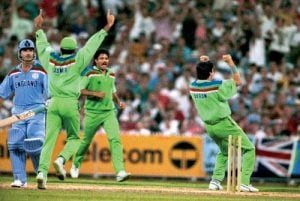
On 25th March 1992, the MCG and its crowd of 87,125 unveiled the curtains for an exciting final between the unpredictable, but talented troops of Imran Khan and Graham Gooch’s England side. England appearing in their second consecutive final were hoping to avenge their defeat four years earlier. Pakistan won the toss and elected to bat but they were instantly ruffled by Derek Pringle. The skipper and Miandad began to rebuild the innings with a concrete partnership of 139 runs. After Illingworth sent Miandad back for 58, Khan joined Inzamam before falling for a well-made 72 runs. Inzamam, just as in the semi final, scored a quick-fire 42 off 35. His stumps were disturbed by Pringle but Wasim Akram’s late cameo of 33 runs took Pakistan to a competitive total of 249/6.
FAQs – Sri Lanka CWC19 squad edition
We’ve been receiving a few questions ……….
The chase for glory was curbed from the beginning. Botham was caught behind for a duck by Akram. England were soon struggling at 69/4 but Lamb and Fairbrother braced with 72 runs in 14 overs. Imran brought Akram back in the 35th over for his second spell, a compelling decision which ultimately sealed the fate of the game. Akram returned, sending Lamb and Lewis back to the pavilion in consecutive deliveries. Khan and Javed swept the rest, securing a magical 22-run win for the Pakistanis. It was time to rejoice for Imran Khan and his men while England were yet again forced to settle for silver, their third loss in a final. A young team, led by a captain standing at the twilight of his career had captured the ideal moment after being “at rock bottom in morale” merely a fortnight earlier.
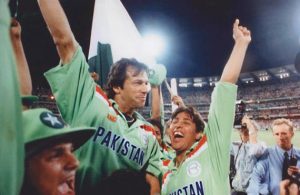
It was a fitting swansong for the 39-year-old veteran, who raised the ‘Benson & Hedges Trophy’ amidst the radiant floodlights at the colossal MCG, pledging the proceedings of his triumph to build a cancer hospital in memory of his late mother.

